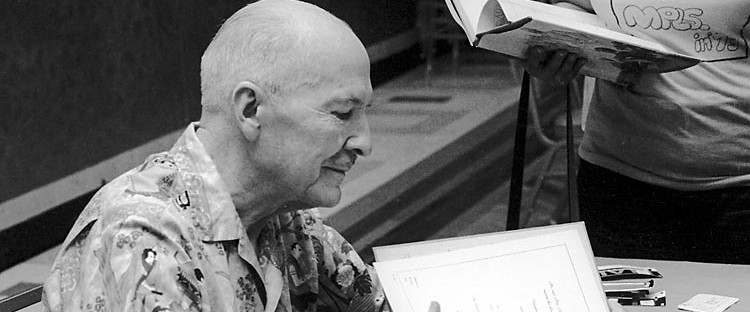 I suppose it bears confessing: I’ve never been a huge fan of Robert A. Heinlein‘s work. I attempted Starship Troopers several years ago and – due to a complete lack of connection with either characters or story – was unable to complete it. I thought something must be wrong with me. I’ve always been a sci-fi fan, and Heinlein is well-respected in the genre. But for some reason, I couldn’t bring myself to enjoy Starship Troopers.
I suppose it bears confessing: I’ve never been a huge fan of Robert A. Heinlein‘s work. I attempted Starship Troopers several years ago and – due to a complete lack of connection with either characters or story – was unable to complete it. I thought something must be wrong with me. I’ve always been a sci-fi fan, and Heinlein is well-respected in the genre. But for some reason, I couldn’t bring myself to enjoy Starship Troopers.
It wasn’t until some time later that I found out I wasn’t alone in my dislike of Heinlein’s work. Despite winning the Hugo in 1960, Starship Troopers has more than its fair share of detractors. Even Paul Verhoeven, who directed the 1997 film adaptation, was unable to complete the novel.
The problem with Heinlein’s work – at least for me – is its complete lack of emotional presence. The author often seems more concerned with the inner-workings of his cold, fictional inventions than with the living characters he purports to create. Starship Troopers is hard science fiction, to be sure, but it lacks the warmth and connectivity others in the genre have managed to emulate.
There is, of course, something to be said for being an award-winning novel. I would certainly hope that my own work is worthy of the awards it has won. However, given the current state of the Hugo Awards – and the revelation that their past might be just as messy as their present – this novel’s success in that arena appears less important by the day. And anyway, doesn’t the relatability of a novel to its audience matter more than the critical response it garners?
One day, maybe, I’ll give Starship Troopers another shot. Despite my negative opinions of hs work, Heinlein remains one of the sci-fi genre’s most influential authors. Perhaps for that reason alone, I – as a sci-fi fan – feel compelled to forgive and forget. If my opinion ever changes, so will this review. But for now, Starship Troopers stands as one of the few novels I’ve ever truly hated.
My rating: 1 of 5 stars
Read all my reviews and follow me on Goodreads!
Image credit: David Dyer-Bennett/Wikimedia Commons
